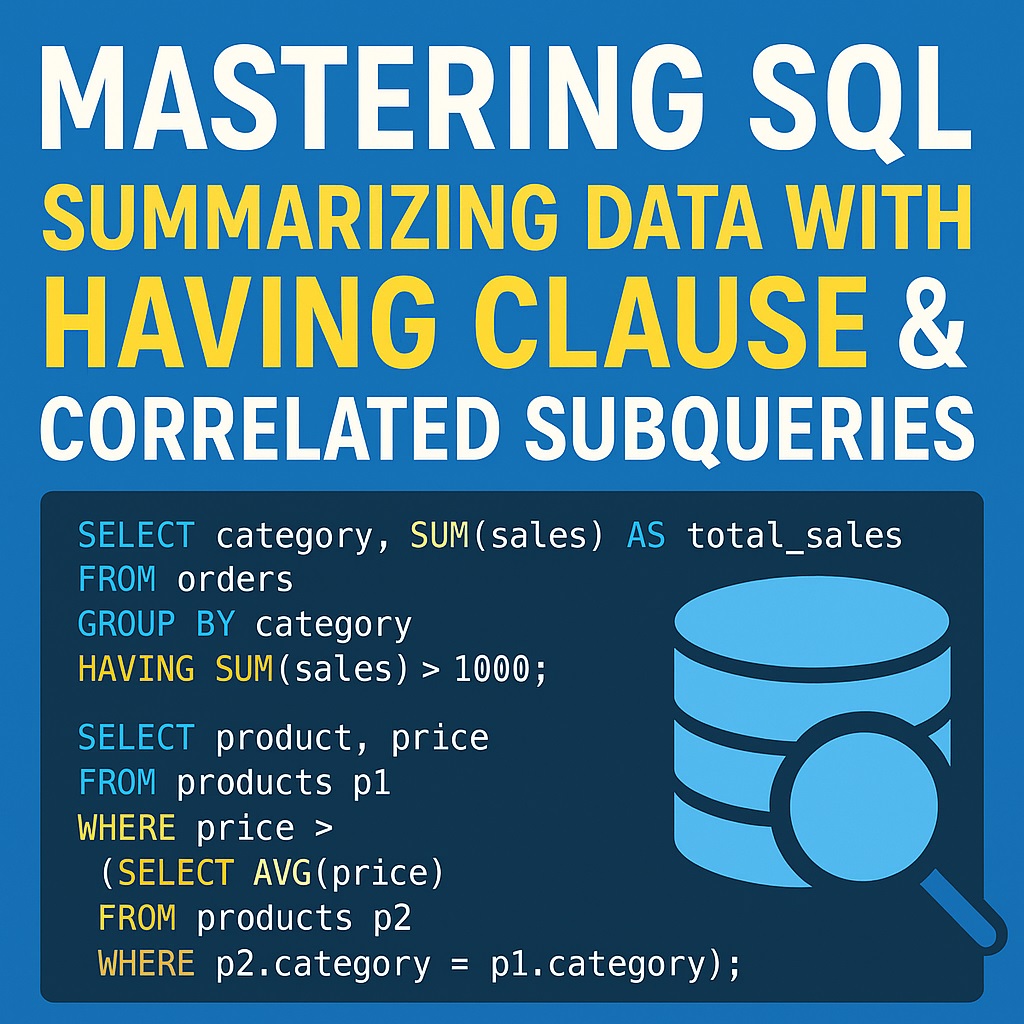In this SQL tutorial, we’ll explore how to summarize data effectively using the HAVING clause and correlated subqueries. Learn how to filter aggregated results, apply conditions to grouped data, and use subqueries that dynamically adjust based on the outer query. Perfect for beginners and advanced SQL learners alike!






SQL HAVING Clause & Correlated Subqueries – Step-by-Step Guide
00:00 Introduction to the HAVING Clause
03:24 Exploring the orderdetails Table for Data Analysis
03:51 Writing an SQL Statement Using the HAVING Clause
08:51 Understanding Data Summarization with the GROUP BY Clause
10:33 Why the WHERE Clause Doesn’t Work for Summarized Data
12:34 Implementing the HAVING Clause in SQL
13:12 Filtering Summarized Data Using the HAVING Clause
14:29 Understanding Correlated Subqueries in SQL
17:20 Writing an SQL Statement for a Correlated Subquery
22:39 Using the IN Operator in a Correlated Query
27:15 Reviewing Correlated Subquery Results














